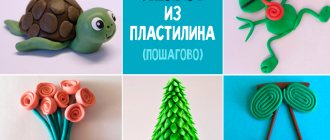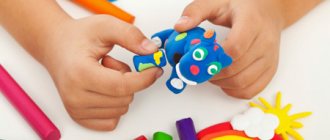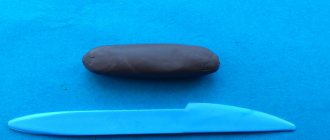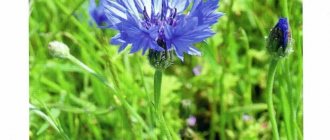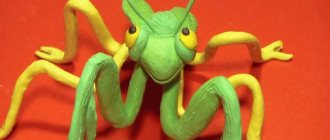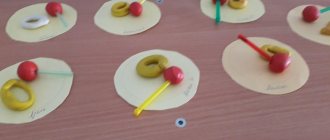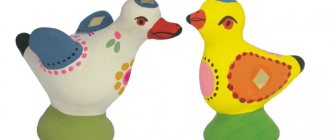MAGAZINE Preschooler.RF
Abstract of the integrated educational activity “Russian folk musical instrument - balalaika”Municipal budgetary preschool educational institution "Child Development Center - Kindergarten No. 104, Vladivostok"
group of general developmental orientation, full day, older age (5-6 years)
Authors:
- teacher of the highest category Dulneva T. E.
- teacher of the highest category Khryukina G. Ya.
- musical director, highest category Schastlivtseva A.M.
Priority educational area: Artistic and aesthetic development (Music)
Integration of educational areas: cognitive development; speech development; social and communicative development.
Goal: developing interest in the history of your country through familiarization with the Russian folk musical instrument - the balalaika
Expected result:
Children will improve their timbre hearing and will be able to identify the sound of a balalaika, pipe, bells, and spoons; will strengthen the skills of proper singing and singing breathing.
Preschoolers will develop the ability to expressively coordinate their dance movements with the character of Russian round dances and dances, and develop clarity and coordination of movements of the hands and body.
Children will continue to improve their sense of rhythm and performance skills, and will reinforce the correct techniques for playing children's musical instruments.
An idea will be formed about folk instruments and folk craftsmen (musician - lozhkari, dudar, balalaika player).
Children will improve their ability to freely and clearly express their thoughts and enrich their vocabulary.
Children will consolidate their knowledge of the state symbols of Russia (coat of arms, anthem, flag).
The skills of respectful attitude towards the traditions and customs of their people, as well as the skills of working in a team will be developed.
Educational technologies:
personality-oriented, playful.
Preliminary work:
Children: acquaintance with the official symbols of Russia - anthem, coat of arms, flag; improving the skills of performing musical and rhythmic movements - hopping, fractional step, gallop, dance movements (" pick" , "spring" , "shelf" ); learning songs: “Fipe” music by A. Lepin lyrics by N. Frenkel (collection “Senior group” , p. 42); Russian folk song “Bai, kachi-kachi, kachi” (No. 12 SD 1 senior group “Ladushki”), ri ; familiarization with the rules of playing with spoons and bells; r.n. m. “In the garden or in the vegetable garden” ; folk game “Burn, burn, clear” r.n. m. arr. Rustamova (collection “Senior group” , p. 123); learning a poem about mom; reading the work of A. S. Pushkin “The Tale of Tsar Saltan ...” and watching the cartoon (excerpt “Squirrel”), getting acquainted with folk costume, looking at illustrations and photo albums; didactic game “Recognize the instrument?” ; board and printed game “Our Motherland” .
Equipment for children: small pictures of flags and coats of arms of the Russian Federation and other countries, spoons, bells, handkerchiefs.
Equipment for the teacher: image of the coat of arms, flag, recording of the anthem of the Russian Federation, balalaika, chest, kokoshnik and Russian folk costume, cap, Russian children's sundress, shirt; audio recordings of the sound of a pipe, spoons, balalaika, orchestra of folk instruments, speaker, laptop (computer), magnetic board.
Vocabulary work: cap, kokoshnik, sundress, shirt, balalaika, dudar, spoon.
Methods and techniques: conversation, explanation, clarification, instructions, explanations, leading questions; game situation “What’s in the chest?”
Form of organization: travel
Progress of activities:
Motivational-problematic stage:
Children enter the music room.
Musical director:
— Guys, I’m glad to see you all, hello! (performing a rhythmic pattern with spoons)
- What did you guys hear now? (children's expected answers are sounds, musical instrument, spoons). That's right, the spoons sounded. What rhythm did they tap, who can repeat it? (children clap the rhythm with their palms).
- Are you familiar with this rhythm? (yes, this is a greeting song, “hello - good morning” )
Musical greeting – “Hello” (reception “Echo” ).
— What material are spoons made of? What types of spoons are there? (simple and painted)
— Spoons were made of wood and decorated at will with carvings, paintings, or simply varnished. While the adults painted them, they let the children play. They banged spoon against spoon. People really liked this sound. And so the game of spoons began. (Teacher's story, children's answers). And a musician - a craftsman who could play spoons well - was popularly called a spooner.
Musical director:
- Would you like to play on the spoons now? (Yes). Then we can play together! There is a chest with spoons on the table, choose your own spoons (the teacher opens the chest, but there are no spoons in it - the children’s reaction)
Problem situation
Musical director:
- What's happened? Lost spoons? So what should I do? (children: look) Is the box completely empty? (No).
Educator:
- Here's what's in the box (pictures). What is this, do you guys know? (image of flags and emblems of different countries)
— All countries have special, most important symbols, which ones? (coat of arms, flag, anthem). Does Russia have it too? (yes) I suggest you figure it out yourself, and for this, girls and boys gather their teams (team task) Explain what you will look for? (children's answers)
Didactic game “Find the coat of arms and flag of Russia”
(girls - choose a card - the flag of Russia; boys - the coat of arms of Russia)
Educator:
- Girls, what do you have in your hands? (Russian flag) Boys, what did you choose? (coat of arms of Russia) what is this? (state symbols of Russia) Yes, these are symbols of our Motherland. What is the Motherland? (children's answers - mother, house, street, city, where you live, etc.) Let's decorate the magnetic board with our pictures.
Activity stage
Musical director:
- To love your homeland you need to know it well. Our Motherland has many different musical voices - these are the voices of folk instruments.
— What folk instruments do you already know? (children's answers)
“Their voices are with us in both joy and sorrow. They sound the same as in the old days. The sound of this instrument will be familiar to some, but not to others. Let's listen to the light, sonorous sound of this instrument, which will give us the Russian folk melody “The Moon is Shining”
Perception of music
Musical excerpt “The Moon is Shining” (balalaika)
Musical director:
- Can any of you name the musical instrument that played this melody? (children's answers, if there is difficulty, option with a riddle)
-Maybe this riddle will help you:
But She only needs three strings for music. The game makes everyone happy! Oh, it's ringing, it's ringing,
Who is she? Guess it... This is our... (balalaika). Three strings, and what a sound. With shimmer, alive.
They will recognize him at the moment - The most Russian instrument... (balalaika)
Teacher's story (demonstration of balalaikas)
The balalaika is a symbol of the musical creativity of the Russian people, the most widespread folk instrument in Rus'. This is a string instrument made of wood. The body resembles a skirt, there is a neck on which there are only three strings and lugs, which help to tune the instrument so that it sounds correctly and melodiously.
(Additional Information:
The balalaika is considered to be the personification of Russian culture.
The name “balalaika” comes from the consonant Russian words balakat, balabolit, balagurit, which means to chat, empty calls. These concepts convey the essence of the balalaika - a playful, light, “strumming” , not very serious. The balalaika was invented by peasants. Gradually it spread among buffoons traveling around the country. Buffoons performed at fairs, entertained people, and earned their living.)
— What was the name of the skilled balalaika player then? Balalaika (pronunciation by children, individually at will, secure)
Musical director:
-Those who listened to the balalaika instantly lifted their spirits, smiles appeared on their faces and lightness appeared throughout their entire body.
-Let's once again listen to the strings of the balalaika and remember their sound.
Musical excerpt “The Moon is Shining” (balalaika)
Musical director:
— Guys, do you want to look into history, into the past of our country? (show the chest - children's reaction)
- These are miracles! Guys, what do you think this is? (box)
- It’s not a simple chest, but a magical one. He will help us travel back in time.
Educator:
- Why was the chest needed at all? (for storing things and various items)
— Yes, chests were usually used to store things that were passed down from generation to generation, from grandmother to mother, and mothers to their daughters and sons.
- What is it? (shows a headdress - kokoshnik, cap, clothes - shirt, sundress) - children's answers, who wore boys or girls, consolidation of words.
The teacher takes out a folk costume - examination and brief commentary with explanation).
Musical director:
“It’s probably too big for our girls, someone needs it as an adult.” I even think that it will suit you (addresses the teacher).
— For now, you guys can try on kokoshniks and caps (children choose kokoshniks and caps on their own).
“So we dressed up like our ancestors did in the old days and we were going to the big room to show off ourselves and look at others and to amuse everyone around us with nursery rhymes.
Russian folk nursery rhyme “Bai, kachi-kachi, kachi”
Rhythmic game "Little Lambs"
Musical director:
The teacher in a suit enters to the music (No. 2 SD 1) with a bow and addresses the children
Educator:
— Guys, do you like this suit? Such costumes were worn in the old days by women and girls. Now artists, musicians and dancers who perform Russian folk songs and dances have such costumes. I really wanted to start dancing and call you.
I can’t resist, I’ll start a round dance,
I will start a round dance, I will lead you.
Musical-rhythmic exercise “Snake” and repetition of a familiar movement - a fractional step.
The teacher leads the children around the hall and brings them into a common circle (musical excerpt No. 6)
Educator:
— And in Rus' in the old days they really loved to dance. Well, look, (shows the dance move “pick” ) what is the name of this movement? But what about this? (show "shelf" )
Children show and name ( "pick" , "shelf" , "spring" )
Educator: Whoever finds his handkerchief will dance faster!
(children choose handkerchiefs for themselves in the chest)
I invite you to hurry up and dance more fun!
Dance exercise “Picking” (No. 23 SD No. 1 senior group “Ladushki” ) with handkerchiefs
Musical director:
- Let the music play again, what does it sound like, who can guess?
Fragments of music. excerpts (dudochka - recording); spoons (fragment)
Children answer after listening to each passage.
Musical director:
- Yes, pipe. A musician played the pipe; they called him dudar. Remember, who can repeat it? (children's answers as desired)
— Russian people loved to sing. Modern composers also write funny songs for children. Here, for example: the performance of a fragment of the melody of the song “Dudochka” (children’s answers).
— Who wants to give this song to their friends? (performance options at the children’s choice - sing with soloists; boys, girls; “in a chain” )
Song "Dudochka"
Musical director:
- How well you sang a funny song about a pipe.
- And I’ll play you this melody (a fragment of the r.n.p. “Is it in the garden, in the vegetable garden)”
— What is the name of the melody? (children's answers) Is there a guest rushing to us to the tune of this melody?
Educator:
— In which literary work of A. S. Pushkin do miracles happen? (The Tale of Tsar Saltan…)
Excerpt from the work of A.S. Pushkin's "The Tale of Tsar Saltan..."
A child dressed as a squirrel reads a fragment.
Musical director:
- A squirrel from a fairy tale came to us and brought us a lot of spoons
And also bells.
Come out quickly, daredevil musicians!
Playing children's musical instruments (noise orchestra):
Orchestra with soloist “In the garden, in the vegetable garden” (spoons, bells)
Music game:
Game "Shine Clear"
Children stand in pairs. They choose a leader with the rhyme “A hare ran through the swamp” or at the choice of the teacher. The game is repeated until all children have participated in the game.
Reflection:
Musical director:
— Have you played enough? It was nice and fun. Did you learn anything interesting? Anyone who plays the balalaika is...a balalaika player. He plays spoons - ...a spooner. Plays the pipe...... - dudar.
Educator:
— Guys, which instrument did you like the sound of most? (express survey of children) Why are these instruments called Russian folk? (answers).
Musical director:
It's time to return to our time and you to your group - let's return things from the past to our chest - what? (children list and put attributes in a chest - kokoshniks and caps, handkerchiefs)
As a farewell to all our friends, we will all sing “Goodbye” .
Options for cards for the didactic game “Find the coat of arms and flag of Russia”
| Next > |
